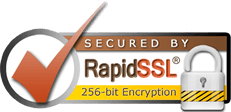Mail settings you might need from your email provider
If Mail asks you to enter email settings manually, you may need to get the account type, mail server address, and other details listed in this article.
Mail automatically uses the correct settings for many email services. That's why you seldom need more than your email address and password to set up an email account on your Mac or your iPhone, iPad, or iPod touch. If Mail needs more information, get the settings in this article from your email provider. You can print the article and complete the Setting column with the information you need.
| Name of setting | Setting | Description |
|---|---|---|
| Full Name | Choose your sender name as you would like it to appear in messages that you send. Example: John Appleseed. | |
| Email Address | Your email address for this account, such as appleseed@example.com. | |
| Incoming mail server settings | ||
| These settings are for downloading messages (receiving email) from your email provider's mail server. | ||
| Account Type | Choose IMAP*, POP, Exchange IMAP, or Exchange EWS1, as directed by your email provider. If you're using a Microsoft Exchange account, see the Exchange setup instructions for Mac or iPhone, iPad, and iPod touch. | |
| Description | Choose the name that Mail will use for your account, such as Work, School, or Yahoo. | |
| Incoming Mail Server (host name) | The host name of the incoming mail server, such as mail.example.com. | |
| User Name | Your user name for this account, such as appleseed. Some email providers want your full email address as your user name. | |
| Password | The email password you use to sign in to your account. | |
| Port | The port number used by the incoming mail server. Common port numbers for incoming mail are 143 and 993 for IMAP accounts, and 110 and 995 for POP accounts. | |
| Authentication | Choose Password, MD5, NTLM, Kerberos, or None, as directed by your email provider. | |
| Use SSL? |
|
Does the incoming mail server support SSL (Secure Sockets Layer) or TLS (Transport Layer Security) encryption? |
| Outgoing mail server (SMTP) settings | ||
| These settings are for uploading messages (sending email) to your email provider's mail server. | ||
| Outgoing mail server (SMTP) | The host name of the outgoing SMTP (Simple Mail Transfer Protocol) server, such as smtp.example.com. | |
| Port |
|
The port number used by the outgoing mail server. Common port numbers for outgoing mail are 25, 465, and 587. |
| Use SSL? | Does the outgoing mail server support SSL or TLS encryption? | |
| Authentication | Choose Password, MD5, NTLM, Kerberos, or None, as directed by your email provider. If None, you may need the additional settings below to send email when you're on a different network, such as from a Wi-Fi hotspot or Internet cafe. | |
| Outgoing mail server (SMTP) settings for when you're on a different network | ||
| Get these off-network settings only if your email provider doesn't use authentication for outgoing mail. | ||
| Outgoing Mail Server (SMTP) | The host name of the outgoing mail server, such as smtp.example.com. | |
| Port | The port number used by the outgoing mail server. | |
| Use SSL? | Does the outgoing mail server support SSL or TLS encryption? | |
| Authentication | Choose Password, MD5, NTLM, Kerberos, or None, as directed by your email provider. | |
* IMAP (Internet Message Access Protocol) is best if you check email from multiple devices, because your messages are stored with your email provider until you delete them. As long as your devices can connect to your email service, your mailbox stays the same on each device. If you use POP (Post Office Protocol) on more than one device, those changes don't appear on every device, and new messages delivered to one device may not be delivered to your other devices.
Information about products not manufactured by Apple, or independent websites not controlled or tested by Apple, is provided without recommendation or endorsement. Apple assumes no responsibility with regard to the selection, performance, or use of third-party websites or products. Apple makes no representations regarding third-party website accuracy or reliability. Risks are inherent in the use of the Internet. Contact the vendor for additional information. Other company and product names may be trademarks of their respective owners.




